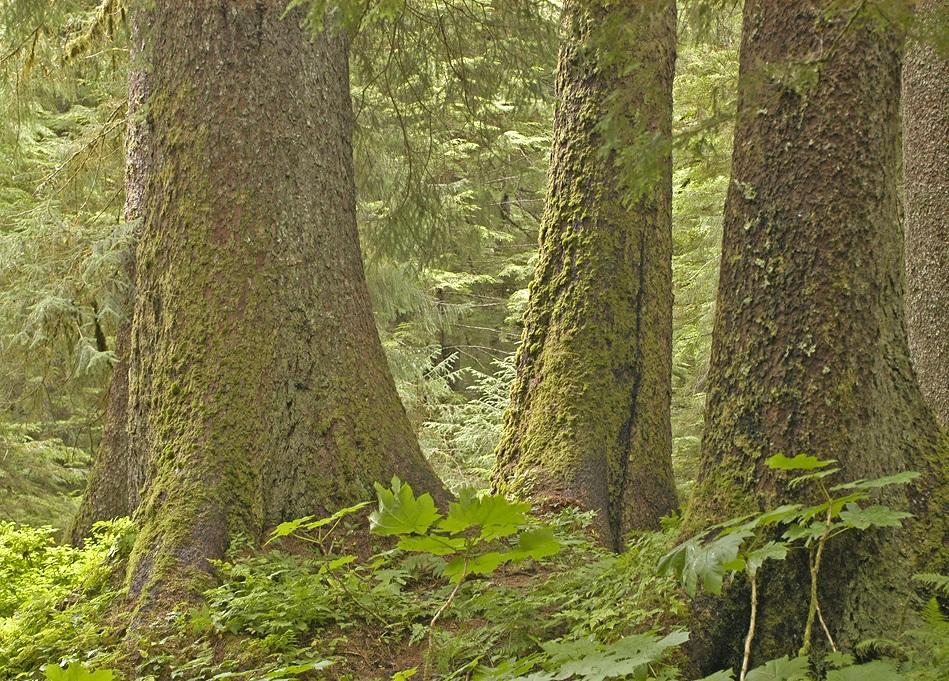
TONGASS NATIONAL FOREST, ALASKA (November 2, 2018) – The U.S. Forest Service has released a Final Environmental Impact Statement (FEIS) and draft Record of Decision (ROD) for the Prince of Wales Landscape Level Analysis Project (POW LLA). The stated purpose of the POW LLA project is to improve forest ecosystem health, help support community resilience, as well as provide economic development to the area. What the project does instead is allow for the sale of 235 million board feet of old-growth forest on Prince of Wales to timber operators over the next fifteen years. This complex of islands has already experienced six decades of high-volume old-growth clearcutting. It is estimated that 94% of the contiguous high-volume forests were clear-cut for timber between 1954 and 2004. Prince of Wales and its surrounding islands host numerous endemic plants and animals, found nowhere else on earth, which rely on large-tree old-growth habitat for sheltering, foraging, and breeding. Clearcutting neither improves the health of this ecosystem nor provides sustainable economic development.
“Old-growth clearcutting in Southeast Alaska is horrifyingly short-sighted, like chopping down an orchard to build a bonfire. Yet time and time again, we see the Forest Service favor industrial timber over conserving the large-tree old-growth forests that are the foundation for salmon and bird habitat and sustainable economies,” said Susan Culliney, Policy Director for Audubon Alaska. “The Prince of Wales project is another unfortunate example of the agency propping up the remains of industrial timber, while turning a blind eye to the many jobs and benefits that come from keeping forests intact.”
Old-growth forests on Prince of Wales Island support birds, deer, wolves, and salmon. This rich ecosystem gives rise to three of the region’s major economic drivers—tourism, fishing, and recreation. Clearcutting here poses the risk for economic harm, especially in the long run. Southeast Alaska already supports a healthy tourism industry reliant on wildlife and intact habitats. Plus, there is plenty of room for sustainable growth. Birding and wildlife viewing are among America’s most popular hobbies. Audubon Alaska’s forthcoming Southeast Alaska Birding Trail is an example of sustainable projects that can foster ecotourism in small communities throughout the Tongass National Forest, including Prince of Wales Island.
“It is disappointing to see the agency entrenched in a clearcutting mindset even as it struggles to appreciate the economic opportunities that come from conserving, rather than chopping down, old-growth forest,” continued Culliney.
The agency now anticipates opening a 45-day objection period on November 3, during which parties who participated in the environmental review process may submit objections to the FEIS and ROD. The POWLLA review process comes against the backdrop of another Forest Service regulatory process to revise the Roadless Rule in Alaska, potentially opening millions of protected acres in the Tongass National Forest, including on Prince of Wales Island, to logging and roadbuilding.
About Audubon
The National Audubon Society protects birds and the places they need, today and tomorrow, throughout the Americas using science, advocacy, education and on-the-ground conservation. Audubon's state programs, nature centers, chapters and partners have an unparalleled wingspan that reaches millions of people each year to inform, inspire and unite diverse communities in conservation action. Since 1905, Audubon's vision has been a world in which people and wildlife thrive. Audubon is a nonprofit conservation organization. Learn more how to help at www.audubon.org and follow us on Twitter and Instagram at @audubonsociety.
Since 1977, Audubon Alaska's mission is to conserve the spectacular natural ecosystems of the state, focusing on birds, other wildlife, and their habitats, for the benefit and enjoyment of current and future generations. Audubon Alaska uses science to identify conservation priorities and support conservation actions and policies, with an emphasis on public lands and waters. Audubon Alaska is a state office of the National Audubon Society. Learn more at www.AudubonAlaska.org.
###
Media Contacts
Susan Culliney, Policy Director, Audubon Alaska, sculliney@audubon.org, 907-276-7034
Rebecca Sentner, Communications Manager, Audubon Alaska, rsentner@audubon.org, 907-276-7034



